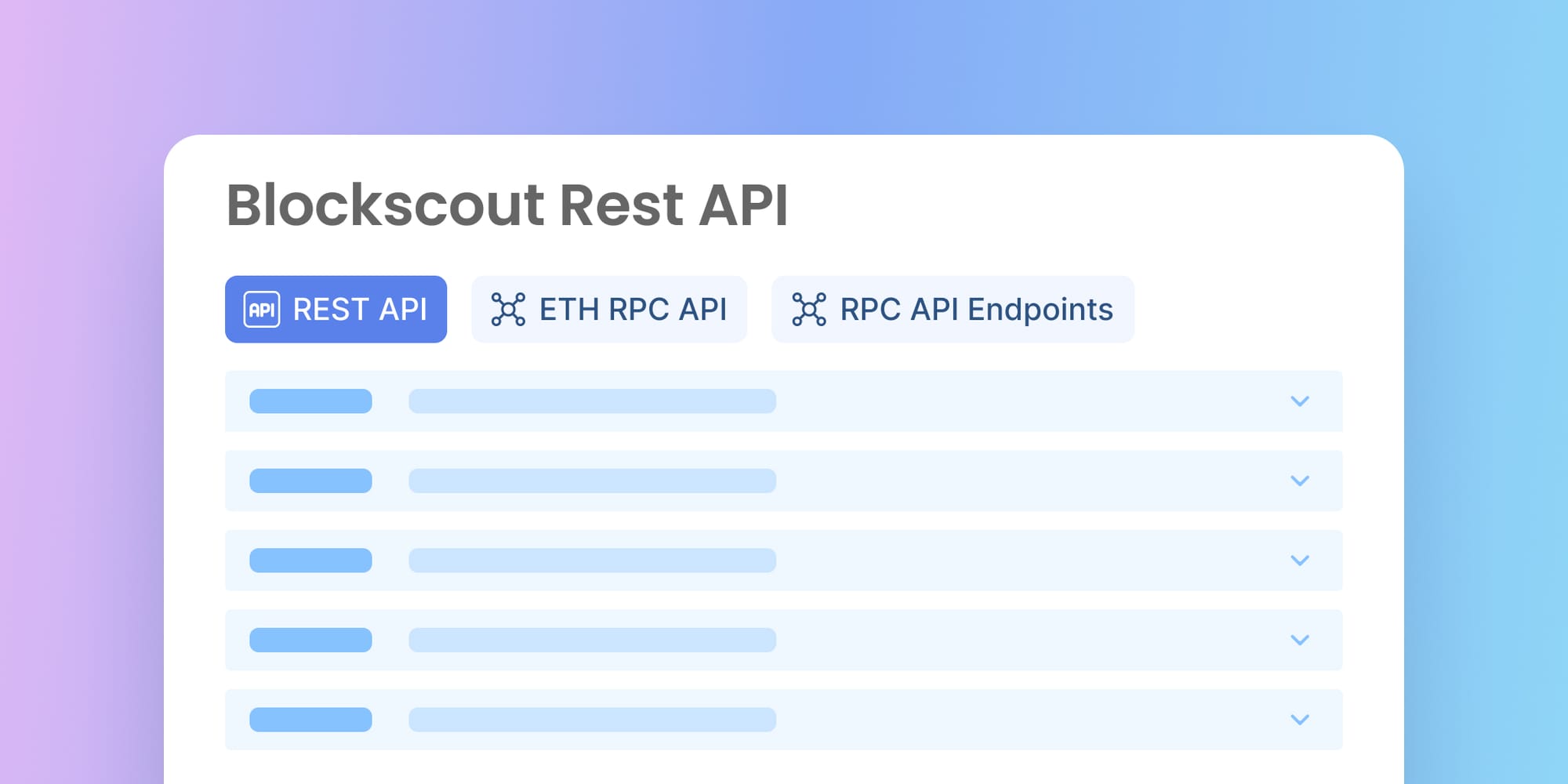Blockscout REST API: New key endpoints and their usage
Blockscout 7.0 introduces a variety of new features and improvements. This guide examines some of the latest API endpoints and provides clear instructions on how to maximize their use.

Blockscout provides a robust interface via its REST API, enabling developers to access blockchain data effortlessly. The REST API creates exciting opportunities for building custom applications, innovative data analysis tools, and seamless integrations.
Blockscout's REST API follows a standard HTTP request/response model. You'll typically send GET requests to specific endpoints and receive JSON responses containing the requested data.
The base URL for the API will depend on the Blockscout instance you're using (e.g., https://blockscout.com/eth/mainnet/internal-transactions).
In this instance,”https://blockscout.com/eth/mainnet” is the base url.
Access the Blockscout REST API
Go to the Blockscout explorer for a specific instance. Click on the API icon, then select the REST API.
API keys
You can login to access API keys, however this is not necessary for the REST API. In general, API keys are useful for the JSON RPC which has a general shared pool limit. Each key has it's own 10 RPS limit, so this is advantageous for the JSON RPC. The REST API is limited by your IP, so keys do not typically give you additional requests per second.
To access API keys, login with either your email or your wallet. You can create up to three different API keys for free.
How to Use the REST API in the Explorer
Copy the URL endpoint from the explorer and use it in an external application or test using API tools. Each endpoint includes a parameter and a response section. The parameter provides additional information about the query, while the response section contains the result of that query.
Click on the “Try it out” button to test;
Click on the Execute button to execute the endpoint.
Copy the request URL to begin using it.
Key Endpoints and Usage
Let’s check out three of the latest endpoints in the recent V.7.0 update; we will test them using Insomnia.
1. /api/v2/proxy/account-abstraction/status
This endpoint provides status updates on account abstraction features within the network. Developers can quickly verify if features like smart contract wallets are supported on a specific blockchain instance, which is important for applications that enhance user experience through advanced account capabilities. Account abstraction enhances user experience by enabling functionalities like smart contract wallets.
you
Test in Insomnia
- Create a new Request collection on your dashboard;
- Copy and paste the request URL into the URL field, selecting GET as the request method.
- Click send, and your response will appear in the preview box in JSON format. The preview shows the account abstraction indexing status for the current instance.
2. /api/v2/internal-transactions
This endpoint retrieves internal transactions from smart contracts on a blockchain. Analyzing these transactions is crucial for:
- Tracking Asset Movements: Understanding how funds move within and between smart contracts.
- Evaluating Decentralized Applications (dApps): Gaining insights into the interactions and performance of dApps.
- Identifying Vulnerabilities: Detecting potential security issues in contract execution.
For example, you can monitor the internal transactions of a specific contract to analyze its behavior and ensure it operates as intended.
Test in Insomnia
- Create a new Request collection on your dashboard;
- Copy and paste the request URL into the URL field, choosing GET as the request method.
- You can specify a particular contract address as a parameter for this endpoint.
- Click send; your response containing all the internal transactions will appear JSON.
3. /api/health/
This endpoint returns the health status of the Blockscout instance. It's useful for:
- Monitoring: Ensuring that the explorer is functioning correctly.
- Alerting: Setting up automated alerts if the instance becomes unhealthy.
For instance, incorporating this endpoint into a monitoring system enables real-time tracking of the explorer's status, allowing for prompt responses to any issues.
Test in Insomnia
- Create a new Request collection on your dashboard;
- Copy the request URL and paste it into the URL field, selecting GET as the request method
- Click send, and your response with the health status of the current BlockScout instance will appear in JSON format.
Additional API Endpoints
The REST endpoints described above are new in Blockscout v7.0.0. Many other REST endpoints are available in Blockscout, empowering developers to create robust applications, conduct thorough data analyses, and ensure seamless integrations with blockchain networks.
In addition to REST APIs, Blockscout also provides standard JSON RPC and ETH compatible endpoints (identical to endpoints served by other explorers), making it easy to incorporate data into your application in any way you choose.

